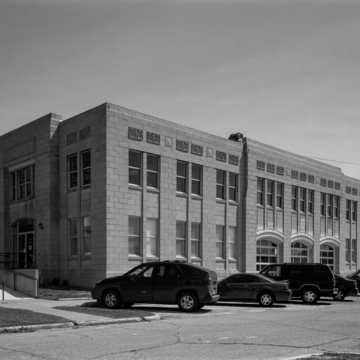You are here
Children's Museum (Bryan Municipal Building)
For this former municipal building, Bertram E. Giesecke moved from the Classical Revival of his father's work at Texas A&M to an early expression of Moderne rendered in glazed terra-cotta. The two-story structure emulates a county courthouse, with slightly projecting center bays on each facade signaling the four entrances of a cross-axial plan. The three large central segmental-arched doors are actually the fire department, public entrances being at the ends. The facades have a vertical emphasis, with stacked paired windows slightly recessed from the wall plane. The resulting pilaster effect creates the impression of a classical colonnade, when in fact the wall is flat. Inset ornamental panels above the windows give the impression of a balustrade to top off the composition. The design effectively conveys a civic monumentality with minimal means.
Writing Credits
If SAH Archipedia has been useful to you, please consider supporting it.
SAH Archipedia tells the story of the United States through its buildings, landscapes, and cities. This freely available resource empowers the public with authoritative knowledge that deepens their understanding and appreciation of the built environment. But the Society of Architectural Historians, which created SAH Archipedia with University of Virginia Press, needs your support to maintain the high-caliber research, writing, photography, cartography, editing, design, and programming that make SAH Archipedia a trusted online resource available to all who value the history of place, heritage tourism, and learning.


